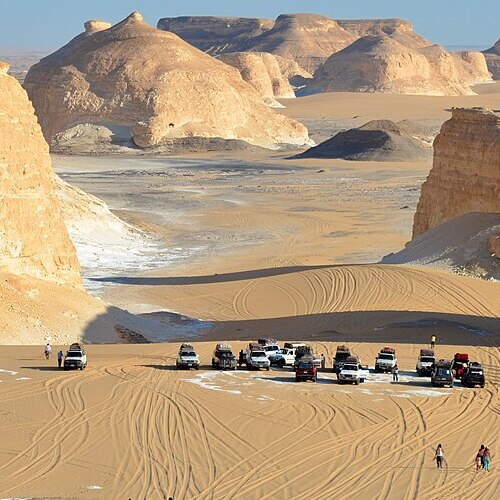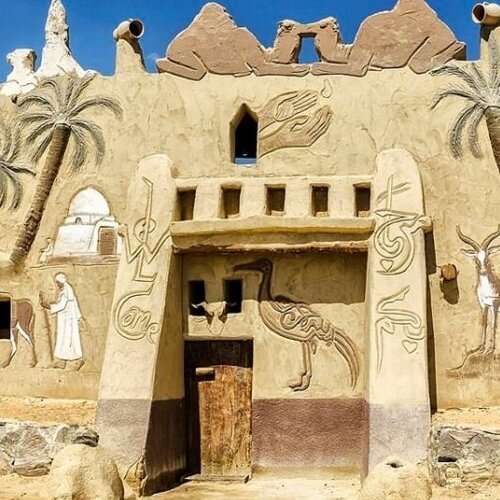El-Qaf
El-Qaf - Djara Cave
In the vast continent of Africa, the presence of rock art within caves is a rare phenomenon. Unlike Europe and Asia, where cave art is more commonly found, African rock art primarily adorns rock shelters, also known as ‘abris’. These shelters, typically shallow and bathed in daylight, form through the weathering of softer rock beneath harder strata. Notable examples in the Egyptian Western Desert include the famed “Cave of the Swimmers” and the “Cave of the Beasts” in Wadi Sora, celebrated for their prehistoric significance.
The Mystique of Caves
In contrast to rock shelters, caves are natural formations, often deep cavities within the earth’s crust, surrounded by hard rock. They are unique environments, often devoid of daylight. Djara Cave, located on the Egyptian Limestone Plateau, about halfway between Asyut and the Farafra Oasis, is one such magnificent cave. This cave, unlike the bright rock shelters, plunges visitors into a world where sunlight does not reach, making its rock art a true cave art.
Djara: A Hidden Gem in the Desert
El-Qaf, also known as Gara or Djara, lies beyond the Farafra Oasis, reachable only through specialized safari trips. Hidden beneath a shallow depression in the desert, this stalactite cave was known to local Bedouin long before its ‘discovery’ by Gerhard Rohlfs in 1873. After falling into obscurity, it was rediscovered in 1989 by Carlo Bergmann, rekindling interest in its historical and archaeological significance.
A Portal to Neolithic Insights
Within this ancient cave, archaeologists have uncovered stone arrowheads and knives, predating those found in the Nile Valley by five hundred years. This suggests that Neolithic technology may have first emerged in the desert, challenging previous understandings of historical progression.
A Limestone Legacy
Formed approximately 100,000 years ago, Djara Cave’s limestone formations ceased growing around 5000 BC with the end of the rains. Over time, the cave has filled with sand, now reaching depths of 150 meters, hinting at a much larger hidden expanse. The cave is adorned with stunning white stalactites and veil formations, some reaching up to six meters in height. Remarkably, each formation emits a unique sound when gently tapped, adding an auditory dimension to the visual spectacle. Visitors are advised to bring their own lighting to navigate this naturally darkened wonder.
Created On March 25, 2020
Updated On January 28, 2024



